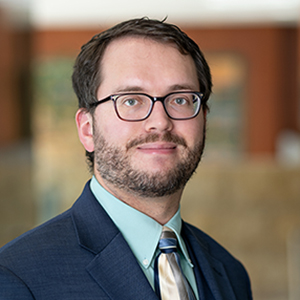The American workforce has gotten older, with young people staying in school longer and older people increasingly delaying retirement.
This graying workforce isn’t solely a consequence of the U.S.’s well-known aging population. America is aging, but that’s not the whole story. Another huge driving factor is individuals’ decisions about whether to work or not.
The Minneapolis Fed has explored the reasons behind the millions of Americans who don’t work, whether because of school, poor health, caring for family, or simple inability to find a job.
But that picture of the American worker—and nonworker—has changed in dramatic ways since the end of the 20th Century.
Consider the most extreme change: the decline of working teenagers. Back in March 2000, more than 42 percent of 16- to 19-year-olds had a full- or part-time job. By March 2022, that was down to just 31 percent.
Seniors aged 65 to 69, past the standard retirement age, are actually more likely to have a job than teenagers. A full 32 percent of these post-retirement-age seniors have jobs, up from less than one-quarter in 2000.
This isn’t just an artifact happening at the extremes. Work has become less common this century among every single age bracket under 55, while every single age bracket over 55 is more likely to work (Figure 1).
These data come from the federal Current Population Survey Annual Social and Economic Supplement, which produces detailed surveys of the American workforce every March. The most recent full survey dates from March 2022.
No single factor explains this long-term shift in the U.S. workforce. While the U.S. population is getting older, the data show a changing workforce even controlling for age. Young workers are more likely to say they’re not working due to poor health—but so are older workers.
Young people are more likely to be in school
Young people are substantially less likely to work than they were two decades ago. But the stats show it’s not a case of young Americans becoming unemployed or just sitting around at home. Instead, they’re more likely to be students (Figure 2).
This increase in students largely reflects structural changes in the U.S. economy, said Artem Gulish, a senior policy strategist and researcher with Georgetown University Center on Education and the Workforce.
“Physical skills that once allowed many young people, especially men, to go into the manufacturing sector have declined in demand from employers,” Gulish said. “That has resulted in a significant increase in the return to education, and many jobs now require at least some post-secondary education.”
Gulish said this change shows up across the board. People who used to go from high school into the workforce are increasingly getting at least some higher education; people who used to stop after getting a bachelor’s degree are now pursuing graduate degrees. “In general, people are moving up to get to the next level,” he said.
A Pew analysis compared time-use data from U.S. teens between 2003–6 and 2014–17, and found that U.S. teens averaged 23 fewer minutes per day working for pay but 16 more minutes per day doing homework. However, time spent watching screens or socializing with friends was flat or down.
Not only are young people more likely to be enrolled in school than before, those who are in school are also less likely to have a job. In 2000, 39 percent of full-time high school students had jobs (mostly part time), or were looking for one. Today that’s down to 25 percent. The share of full-time college students who work (or are seeking work) has fallen from 52 percent to 45 percent (Figure 3).
“Many [high schoolers] used to take summer jobs, but now they take summer courses … to make sure they get into good colleges,” said Gulish.
Older Americans increasingly delay retirement
The story is entirely different at the other end of the age spectrum. Older Americans are increasingly staying on the job in years when a few decades ago they might have been retired. Two decades ago, nearly 10 percent of 55-year-olds were retired. Today it’s 5 percent. The share of retirees at age 59 has fallen from 20 percent to 10 percent, while at the traditional retirement age of 65, less than half of Americans are now retired, against 58 percent in 2000.
This change has been going on for decades, said Jen Schramm, a senior policy advisor for AARP. Labor force participation among seniors began falling after World War II, as better government retirement programs let older people stop working. But since the early 1990s, older Americans have been working more and more.
“Not only will we have more older workers because the older adult population is increasing overall, but it also looks like the likelihood of continuing to work at older ages is going up,” Schramm said (Figure 4).
People have many reasons to work or retire at any given age. Twin Cities resident Lee Mehrkens, of the Twin Cities suburb Vadnais Heights, saw his hard-working father die of cancer soon after retiring, and resolved to do things differently himself. He retired in 2020 at the age of 59 and has been enjoying golf and travel in his new free time. “My motivation was back to the lesson from my father: There are no guarantees of a tomorrow. Don’t assume you’re going to have a long retirement, because it’s not guaranteed to you,” said Mehrkens.
But Mehrkens could afford to retire early through a combination of having good paying jobs, saving a lot, and having access to a public-sector pension plan. Many older Americans work well into their 60s or even 70s not because they want to but because they have to. Schramm said AARP’s surveys show money is the biggest reason older adults are still working, whether it’s needing money now to meet expenses or wanting to save up a bigger nest egg before retiring.
The trend toward more work at older ages is broad-based. Older men are more likely to work than older women, and older people with college degrees are more likely to work than those without. But all these groups have seen increases in labor force participation over the past two decades (Figure 5).
The data also reveal another trend: the rising share of older adults who aren’t working because of health issues. This is almost exclusively a trend among older workers without college degrees, where more than 16 percent say they’re not working due to health reasons—up from 10 to 11 percent in the year 2000.
“The workers who have the least in retirement savings, because they’re earning the least, are in physically demanding jobs. They’re more likely to just not be able to work in physically demanding jobs well into their 60s and beyond,” said Schramm. “That is a continuing challenge that policymakers are wrestling with.”
COVID has scrambled some of these trends
Not all of these long-term changes are happening at the same pace. The bulk of the drop in high schoolers with part-time jobs, for example, happened from 2000 to 2010, when the rate collapsed from over 30 percent to 15 percent. Since 2010, the rate of part-time work among high schoolers has held steady, and even bounced back a bit.
Similarly, the COVID-19 pandemic has scrambled some of these trends, at least in the short term.
Among younger Americans, school enrollment fell once the pandemic hit, and rates of employment rose. These changes don’t undo the bigger structural changes that have taken place over recent decades, but they do mark a change in direction, at least temporarily.
Other factors these past few years have affected work rates among older Americans—sometimes in conflicting ways. Research by the Federal Reserve Board’s Joshua Montes, Christopher Smith, and Juliana Dajon shows many older people retired during the pandemic who probably wouldn’t have retired otherwise, especially college-educated workers over 65. Another study by Miguel Faria e Castro and Samuel Jordan-Wood of the St. Louis Federal Reserve Bank found that falling asset prices in 2022 might have driven nearly 400,000 older Americans into the workforce.
Ultimately, these developments reflect how technology, demographics, culture, and other factors combine to reshape the American workforce—a reshaping increasingly defined by age.






